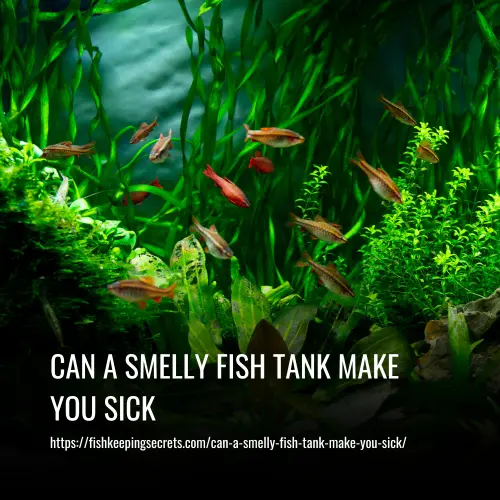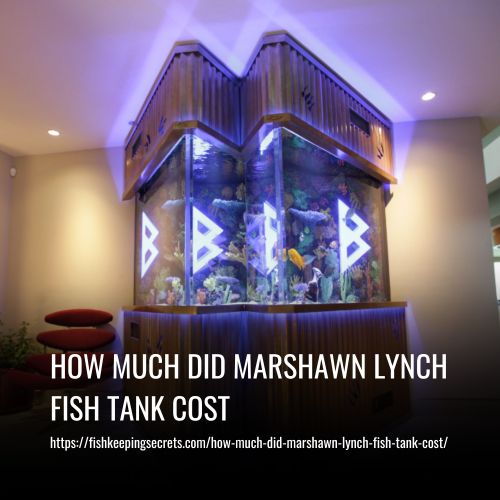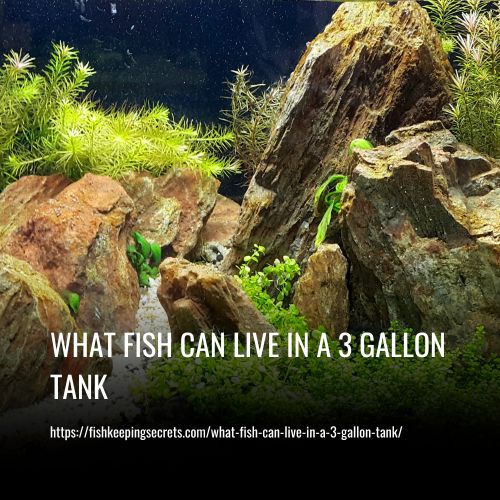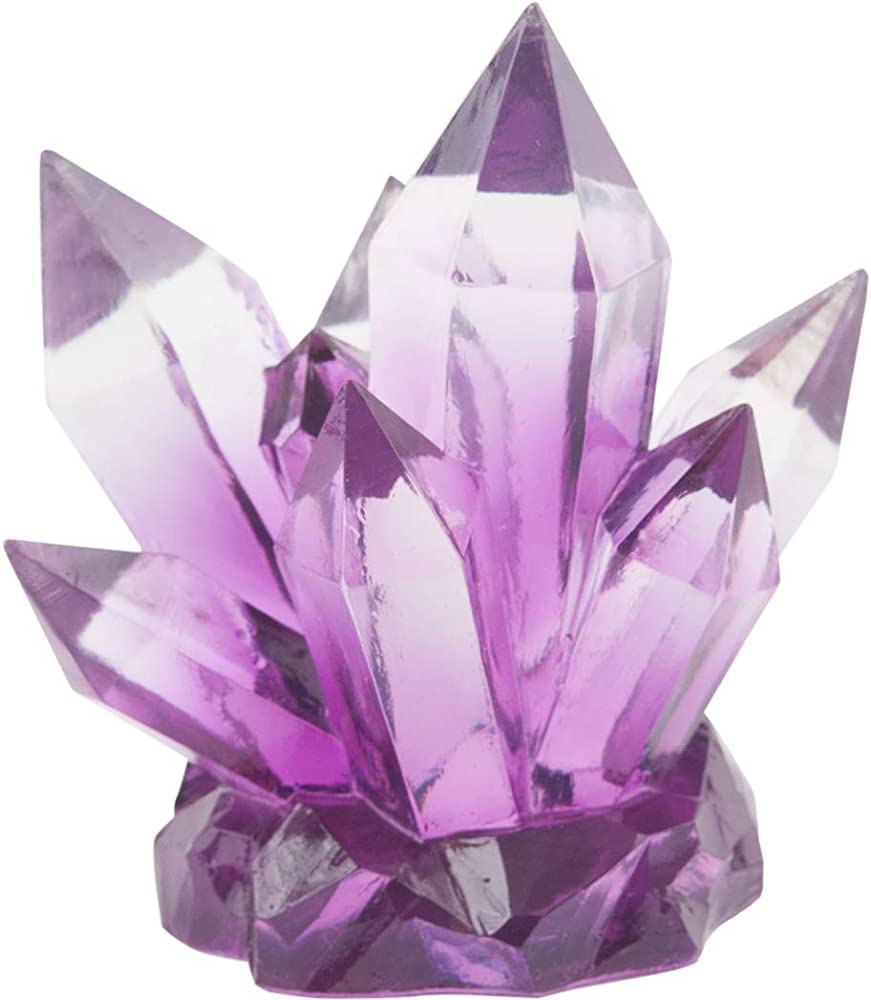Can You Clean A Fish Tank With Soap
This post contains affiliate links. As an Amazon Associate, we earn from qualifying purchases.
No, you cannot clean a fish tank with soap. Soap is toxic to fish and other aquatic creatures.
Maintaining a clean and healthy habitat for your aquatic pets is essential for their well-being. Many people assume that using soap to clean a fish tank is a quick and easy cleaning solution. However, using soap may cause harm to your fish and plants as it can leave residue that can be toxic to them.
It is always best to avoid using any household cleaning products that contain soap, detergents, or other harmful chemicals when cleaning a fish tank. Instead, you can use specialized aquarium cleaning products or natural substances such as vinegar, baking soda or lemon juice to maintain a clean fish tank.
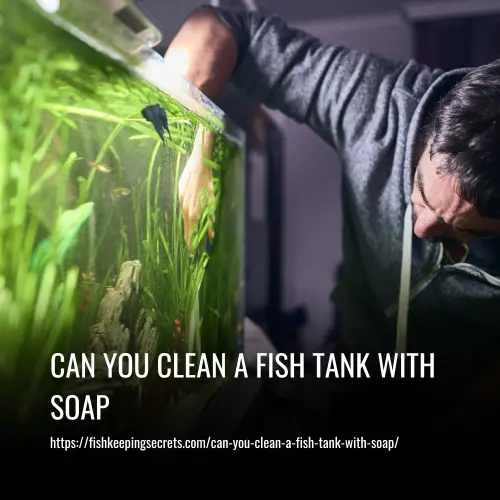
The Pros Of Cleaning Your Fish Tank With Soap
Cleaning your fish tank is essential to keeping your aquatic pets healthy. However, the question that pops in the mind of most fish enthusiasts is whether using soap is an effective solution for cleaning fish tanks. Many people think that using soap for cleaning fish tanks may harm the aquatic life, but this is not always the case.
Let’s examine the pros of cleaning your fish tank with soap.
Discussion Of Why Soap Is Effective For Cleaning Fish Tanks
Soap is an excellent cleaning agent because it is designed to remove dirt, grime, and bacteria from various surfaces. So, when it comes to cleaning fish tanks, using soap that is designed specifically for this purpose can also be an effective solution.
The reasons why soap is effective in cleaning your fish tank include:
- It helps to remove stubborn algae that may be sitting at the bottom of the tank
- It helps to break down dirt, grime, and bacteria that can cause harm to your fish
- It is great for removing fish waste and excess food that may have settled at the bottom of the tank
Benefits Of Using Soap As A Cleaning Agent For Fish Tanks
Using soap for cleaning fish tanks offers several benefits, including:
- It helps to keep your fish tank clean and hygienic, which ensures your fish stay healthy
- It is time-saving, as it quickly gets rid of dirt, grime, and bacteria, which can take longer to remove when using other methods of cleaning
- It can easily remove difficult stains, such as those caused by hard water buildup
Examples Of When Using Soap For Cleaning Fish Tanks May Be Necessary
Although using soap for cleaning fish tanks offers great benefits, it is not always the best solution for every cleaning situation. Here are some examples of when using soap for cleaning fish tanks may be necessary:
- If your fish tank has stubborn algae that cannot be removed using normal methods, such as scraping it off with a tank scrubber
- If you have inherited an old fish tank that has not been cleaned for a long time
- If you have accidentally spilled something in your fish tank, which has stained the surface, and normal methods aren’t working to remove it.
Using soap to clean your fish tank is an excellent solution for maintaining the cleanliness and hygiene of your aquarium. However, it is essential to choose the right soap designed specifically for this purpose and to follow the directions thoroughly.
With proper use, soap can be an effective and convenient solution for cleaning your fish tank, ensuring your aquatic pets stay healthy and happy.
The Cons Of Cleaning Your Fish Tank With Soap
Fish tanks can be a beautiful addition to any home or office, providing not just aesthetic value but also comfort and relaxation. But maintaining the cleanliness of a fish tank can be quite the challenge. Some fish owners may wonder if using soap is an effective way to clean their tanks.
We will explore the cons of cleaning your fish tank with soap and why it may not be the best option for your aquatic pets.
Explanation Of Why Soap May Not Be The Best Option For Cleaning Fish Tanks
- Soap contains chemicals that can harm fish: Soap contains substances that can be harmful to fish and other aquatic animals. Some of these chemicals are highly toxic and may even lead to death.
- Soap residue can be difficult to remove: Even if you rinse your tank thoroughly, the residue left behind by soap can be tough to get rid of completely. This residue can continue to harm your fish, leading to health issues, and even death.
- Soap can disrupt the natural balance of the tank: Soap can disturb the natural balance of your aquarium and can harm the beneficial bacteria that live in it. As a result, the tank’s filtration and cleaning processes may become less effective.
Risks Associated With Using Soap For Cleaning Fish Tanks
- Soap can harm the fish’s protective slime coat: The slime coat that covers fish bodies helps protect them from harmful bacteria, parasites, and other substances in the water. Soap can strip this coat and put fish at risk for infections, diseases, and other health problems.
- Soap can harm other aquatic life: Soap not only hurts fish, but it can also harm other aquatic organisms, such as snails, shrimp, and plants. These creatures serve as a vital part of your tank’s ecosystem, and harming them can result in a less healthy environment for your fish.
Negative Effects Of Using Soap For Cleaning Fish Tanks
- Your fish may suffer health problems: The use of soap can lead to a host of health issues in your fish. They may experience issues such as respiratory distress, skin irritation, and even death.
- It reduces the effectiveness of the tank’s filtration system: As mentioned earlier, the chemicals in soap can disrupt the proper functioning of your tank’s beneficial bacteria that help keep the water clean and your fish healthy.
- It can make the tank water cloudy: Soap can leave your tank water murky, making it difficult to see your fish and other aquarium inhabitants.
Although soap may seem like a quick and easy solution for cleaning your fish tank, it can lead to severe health problems for your aquatic pets. Instead of using soap, it’s best to opt for natural methods like vinegar, baking soda, or a dedicated aquarium cleaner that is safe for fish and poses no risk to their health.
Remember always to prioritize the well-being of your fish and take steps to ensure a clean and healthy living environment for them.
Alternatives To Cleaning Your Fish Tank With Soap
Can you clean a fish tank with soap: alternatives to cleaning your fish tank with soap
Cleaning a fish tank is essential to maintaining a healthy and happy aquatic environment. While some people may be tempted to use soap as a cleaning agent, it is important to note that soap can be harmful to fish and other aquatic creatures.
Luckily, there are several alternatives to cleaning your fish tank with soap.
Overview Of Alternative Cleaning Methods For Fish Tanks
There are several safe and effective ways to clean a fish tank without using soap. Here are some of the most common methods:
- Using a gravel vacuum to remove debris from the bottom of the tank and replace the water
- Using an algae scraper or pad to remove built-up algae
- Using a magnetic glass cleaner to clean the inside of the tank
- Using a siphon to remove debris and waste from the substrate
Effectiveness Of Alternative Cleaning Methods Compared To Using Soap
Cleaning your fish tank with soap may seem like a quick fix, but it can harm your fish and other aquatic creatures. The alternative cleaning methods mentioned above are just as effective, if not more so, than using soap. Here’s why:
- Gravel vacuums and siphons are designed to remove debris and waste from the bottom of the tank, ensuring a healthy and clean environment for your fish
- Algae scrapers and pads are specifically designed to remove algae from the glass without harming your fish or scratching the tank
- Magnetic glass cleaners make it easy to clean the inside of your tank without disturbing your fish or other aquatic creatures
Pros And Cons Of Using Alternative Cleaning Methods
Like with any cleaning method, there are pros and cons to using alternatives to soap when cleaning your fish tank.
Pros:
- Alternative cleaning methods are safe for your fish and other aquatic creatures
- They are just as effective, if not more so, than using soap
- They are less likely to leave behind harmful residue that can harm your fish and other aquatic creatures
Cons:
- Some alternative cleaning methods may require more time and effort than simply using soap
- Certain methods, such as using an algae scraper, may require more physical effort
- Some methods, such as using a magnetic glass cleaner, may require a specific type of tank (such as a glass tank)
It is clear that there are several safe and effective alternatives to cleaning your fish tank with soap. While soap may seem like the easy solution, it can harm your aquatic environment. By using the alternative cleaning methods mentioned above, you can ensure a healthy and happy environment for your fish and other aquatic creatures.
How To Safely Clean Your Fish Tank With Soap
If you’re a fish tank owner, you probably already know how important it is to keep your aquarium clean at all times. It’s essential for the overall health of your fish and maintaining a beautiful display. However, one of the common questions that arise among fish tank owners is whether or not they can clean their fish tank with soap.
In this blog post, we’ll explore this topic and provide you with a step-by-step guide on how to safely clean your fish tank with soap.
Step-By-Step Guide On How To Clean Your Fish Tank Using Soap
Cleaning your fish tank with soap is safe and effective if you follow the right steps. Here’s a step-by-step guide on how you can do it:
- Remove all the fish and decorations from the tank and put them in a secure and temporary holding tank.
- Empty the water from the tank and rinse it with water thoroughly.
- Add a small amount of soap to a clean sponge and wipe the sides of the tank and the decorations. Alternatively, you can use a fish-safe cleaning solution available in the market to avoid the risk of using soap.
- Rinse the tank, the decorations, and the sponge thoroughly with clean water.
- Fill the tank with clean water and add the decorations back in.
- Let the tank sit for a few minutes before reintroducing the fish.
Precautions To Take When Using Soap For Cleaning Fish Tanks
While it is safe to use soap to clean your fish tank, there are some precautions that you need to take:
- Do not use any soap that contains dyes, fragrances, or any other chemicals that are toxic to fish. Always read the label of the soap before using it.
- Use a very small amount of soap and ensure that it is completely rinsed off before reintroducing the fish into the tank. Any traces of soap can harm your fish.
- Wash your hands thoroughly before and after cleaning the tank.
- Always follow the instructions on the soap’s label and take the necessary precautions to avoid any accidents.
Best Practices For Cleaning Fish Tanks With Soap
Now that you know that you can clean your fish tank with soap let’s cover some best practices:
- Always choose a mild and fish-safe soap or cleaning solution that contains no harmful chemicals.
- Never use soap on the filter, heater, or any other equipment in the tank as it can damage them.
- Always rinse the sponge or cloth that you’re using to clean the tank with clean water before dipping it in the soap solution.
- Only use a sponge or cloth to clean the tank and avoid using any scrubbers as they can scratch the glass or acrylic of the tank.
- Clean your tank at least once a week, and spot clean in between to keep it looking beautiful and healthy.
You can safely clean your fish tank using soap if you follow the right steps and take the necessary precautions. It’s essential always to choose a mild soap that is safe for your fish and to follow the instructions provided by the manufacturer.
Cleaning your fish tank is an important part of maintaining a healthy and beautiful aquarium display.
FAQs
No, you should not clean a fish tank with soap. Soap is toxic to fish and can harm them.
You should avoid using any soap containing fragrances, dyes, or chemicals. Only use unscented dish soap.
You can clean your fish tank using a scraper, siphon, and/or algae scrubber. Replace the water and filter every month.
No, you should never use bleach to clean a fish tank. It is toxic to fish and can harm them.
Yes, white vinegar is safe to use on a fish tank. Mix 1 part vinegar to 9 parts water and rinse thoroughly.
Conclusion
Cleaning a fish tank is crucial to keep it healthy and safe for aquatic life. In this blog post, we looked at whether or not using soap is a suitable method for cleaning a fish tank. While it may seem like a natural solution, using soap can be hazardous to fish and harmful to plants in the tank.
It can also leave behind soap residue, causing negative impacts on the water quality. Therefore, it is not recommended to use soap for cleaning a fish tank. Instead, regular cleaning with water and regular maintenance, such as changing water and removing debris, should be enough to keep your fish tank clean and healthy.
By following these simple steps, you can provide a safe and comfortable environment for your fish to thrive in, leading to happier and healthier aquatic life.

